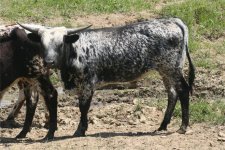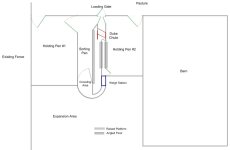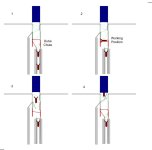Spiveyman
Platinum Member
YES! I had almost this exact same discussion with my business partner Friday. I was reading on one of the links you posted about how cattle have such a great memory so you should make their first experience a good one. We need to brand about 35 bull calves, but we don't want that to be the very first experience through the chute. So we're going to do basically what you mentioned in your post. We're going to set it up so that we can get the whole herd in a pen, then move them through the alley and sweep system, basically just following a bucket with grain, through the head gate and into another pen. Then feed them there. We are going to do this several times (not sure how long is enough) before we actually start catching them to give them the worming meds, tags, and brands.
As for the horns, we are leaving them in tact. Most people see them as a big problem, but that's half the point of raising Longhorns. There's no way we'd poll them. (not sure if that's the correct terminology there) We love the horns, seeing them grow is half the fun. And if you train them properly the horns shouldn't be a problem. Also, there is a demand for the horns and skulls. We make a pretty decent dollar off of them. We get plenty of pressure from family and friends in this neck of the woods to get rid of the horns, but I'm surprised to hear that from a Texan! See, here's one of our little fella's, I can't imagine him without those budding horns:
See, here's one of our little fella's, I can't imagine him without those budding horns:

As for the horns, we are leaving them in tact. Most people see them as a big problem, but that's half the point of raising Longhorns. There's no way we'd poll them. (not sure if that's the correct terminology there) We love the horns, seeing them grow is half the fun. And if you train them properly the horns shouldn't be a problem. Also, there is a demand for the horns and skulls. We make a pretty decent dollar off of them. We get plenty of pressure from family and friends in this neck of the woods to get rid of the horns, but I'm surprised to hear that from a Texan!




